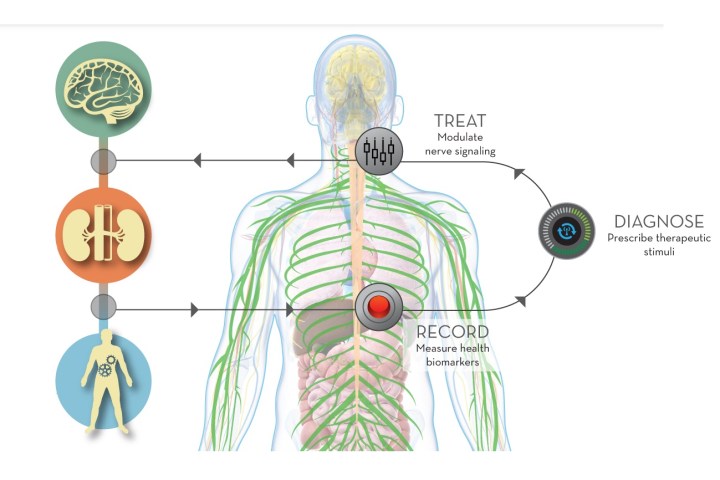
Earlier this week, DARPA announced the first seven research teams that will participate in the agency’s Electrical Prescriptions (ElectRx) program. As its name implies, this project is dedicated to creating technology that will treat mind and body disorders with therapies that alter the electrical pulses that run through nerves.
The project has an ambitious goal — to tap into the peripheral nervous system and use it to both detect the onset of disease and make self-corrections that restore the body back to full health. “We envision technology that can detect the onset of disease and react automatically to restore health by stimulating peripheral nerves to modulate functions in the brain, spinal cord, and internal organs,” said bioengineer and ElectRx program manager Doug Weber.
The frist round of participants in ElectRx are tasked with mapping the neural circuits involved in the diseases that DARPA wants to study, which include chronic pain, post-traumatic stress disorder, and inflammatory disease. Participants also are asked to begin the development of minimally invasive neural and bio-interface technologies to support this self-healing objective. It’s a long-term objective with several researchers already partnering with a device manufacturer to spearhead the necessary device development and testing phase of the project.
Researchers will be studying a variety of topics that include the targeted diseases listed above along with more general procedures that treat a variety of maladies. A team from MIT is studying the used of magnetic nanoparticles and heat in the regulation of neuron activity, while a team from Columbia University is using ultrasound in a similar goal of neuromodulation. Another project aims to use vagal nerve stimuation (VNS) to help reduce fear and aniety in soldiers who are exposed to traumatic cues. VNS already is being used to treat difficult cases of depression and epilepsy, so this project is a natural extension of the technology.
Program manager Weber hopes to use the technology developed by these research teams to improve both military and civilian health in the future. “It will be an exciting path forward,” said Weber in a statement.




